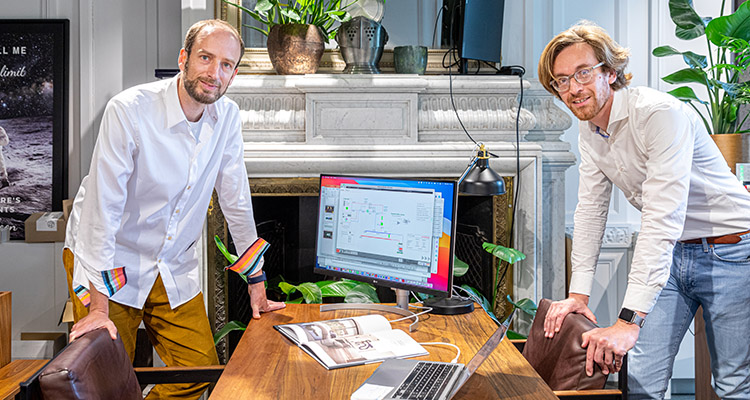
Sustainable energy as a service

If we want to be CO2 neutral by 2050, we urgently need to tackle our buildings. They are the largest source of CO2 emissions in Belgium, as Jeroen Rabaey confirms. Together with partner Menno Janssens, he makes (older) apartment buildings more energy efficient. Like the Brusilia tower in Schaerbeek, an iconic skyscraper built in 1967.
“To make the energy production in apartment buildings more sustainable, we have to work with dozens of owners,” Rabaey says. “Step by step, we are working on solutions to transform the collective heating system, which often still runs on natural gas or even heating oil, in a sustainable manner. This is only possible if we can convince the end users that they will benefit from it and be completely ‘unburdened’.”
Worry-free energy
In Brussels, Noven has concluded long-term contracts with some 40 VMEs (associations of co-owners) to finance access to sustainable energy, redesign heating sites and install cogeneration heat pumps, solar panels and charging stations in existing buildings.
“Via an online platform, we permanently monitor everything and can immediately make adjustments where necessary. After a while, we use the collected data to monitor consumption even more optimally and make adjustments in a sustainable manner. As a result, end users save on their energy bills and also remain assured of sustainable energy, even in an old building.”
Heat from the sewer
Noven was created six years ago and is also active as a partner to developers of new construction projects. A prestigious showpiece is the Suikerpark in Veurne, a project that BNP Paribas Fortis co-finances. “There, we have built the first heat network in Flanders that is entirely fed by industrial residual heat. We heat the entire residential area with the vapour of the potatoes from the nearby PepsiCo chips factory,” says Rabaey.
Another exciting project in the pipeline is the Boerentoren in Antwerp, for which Noven is developing a test case for ‘riothermy’. “If we extract heat from sewage, we can reduce the primary energy factor by 45 per cent,” he says.
Projects with residual heat are rather rare in our country. “You have to be able to rely on an industrial partner over the long term, and it has to be close to the homes. That is why we usually opt for underground heat networks. A heat pump then extracts heat from the ground and provides the residents with hot water, heating and - equally important - cooling.”
Partners in sustainability
BNP Paribas Fortis has already financed several Noven projects. “The bank has always had great confidence in what we were doing. What we have been able to achieve is largely due to that trust, without getting too emotional,” laughs Rabaey. “At the same time, I see that we are also important to BNP Paribas Fortis because we contribute to its sustainable ambitions. We reinforce each other.”
Entrepreneurial success stories
At BNP Paribas Fortis, we are particularly proud to support passionate and inspiring entrepreneurs like Jeroen Rabaey. Working together to forge new ways of doing business: another example of Positive Banking.